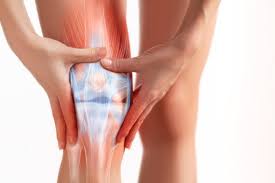
Breaking News
 Selling Us Rope: Palantir Is Raking In Billions From Washington
Selling Us Rope: Palantir Is Raking In Billions From Washington
 Tyson Foods Confirms Protein Switching Underway Amid Record High Beef Prices
Tyson Foods Confirms Protein Switching Underway Amid Record High Beef Prices
 Holy SH*T! Sex Offender Can't Adopt Kids--So He Bought One Instead? | Redacted w Clayton Morris
Holy SH*T! Sex Offender Can't Adopt Kids--So He Bought One Instead? | Redacted w Clayton Morris
Top Tech News
 'Robot skin' beats human reflexes, transforms grip with fabric-powered touch
'Robot skin' beats human reflexes, transforms grip with fabric-powered touch
 World's first nuclear fusion plant being built in US to power Microsoft data centers
World's first nuclear fusion plant being built in US to power Microsoft data centers
 The mitochondria are more than just the "powerhouse of the cell" – they initiate immune...
The mitochondria are more than just the "powerhouse of the cell" – they initiate immune...
 Historic Aviation Engine Advance to Unlock Hypersonic Mach 10 Planes
Historic Aviation Engine Advance to Unlock Hypersonic Mach 10 Planes
 OpenAI CEO Sam Altman Pitches Eyeball-Scanning World ID to Bankers
OpenAI CEO Sam Altman Pitches Eyeball-Scanning World ID to Bankers
 New 3D-printed titanium alloy is stronger and cheaper than ever before
New 3D-printed titanium alloy is stronger and cheaper than ever before
 What is Unitree's new $6,000 humanoid robot good for?
What is Unitree's new $6,000 humanoid robot good for?
 "No CGI, No AI, Pure Engineering": Watch Raw Footage Of 'Star Wars'-Style Speeder
"No CGI, No AI, Pure Engineering": Watch Raw Footage Of 'Star Wars'-Style Speeder
 NASA's X-59 'quiet' supersonic jet rolls out for its 1st test drive (video)
NASA's X-59 'quiet' supersonic jet rolls out for its 1st test drive (video)
 Hypersonic SABRE engine reignited in Invictus Mach 5 spaceplane
Hypersonic SABRE engine reignited in Invictus Mach 5 spaceplane
Discovery of 'Tendon Stem Cells' Could Revolutionize How We Recover From Injuries

Debilitating tendon injuries may soon be a thing of the past now that researchers have discovered the existence of "tendon stem cells" for the first time.
The buildup of scar tissue makes recovery from torn rotator cuffs, jumper's knee, and other tendon injuries a painful, challenging process, often leading to secondary tendon ruptures.
New research led by Carnegie's Chen-Ming Fan and published in Nature Cell Biology reveals the existence of tendon stem cells that could potentially be harnessed to improve tendon healing and even to avoid surgery.
"Tendons are connective tissue that tether our muscles to our bones," Fan explained. "They improve our stability and facilitate the transfer of force that allows us to move. But they are also particularly susceptible to injury and damage."
Unfortunately, once tendons are injured, they rarely fully recover, which can result in limited mobility and require long-term pain management or even surgery. The culprit is fibrous scars, which disrupt the tissue structure of the tendon.
Working with Carnegie's Tyler Harvey and Sara Flamenco, Fan revealed all of the cell types present in the Patellar tendon, found below the kneecap, including previously undefined tendon stem cells.



